Non-cash payments are increasingly popular, with online transactions projected to reach around $17.6 trillion by 2027.
Traditional payment methods, on the flip side, are slated to drop to around 70% of non-cash transaction volumes in the same time frame.
This article will compare PayPal and Stripe, two leading payment options, to determine which is better for online stores and explore their strengths and weaknesses.
What Is PayPal and How Does It Work?
PayPal is an online payment gateway that allows customers to make purchases online and receive and send money.
PayPal leads as the top online payment gateway, holding over 60% market share with more than 390 million active users and 1.6 million websites using it.
It's known for its user-friendly interface, robust security features, and excellent developer tools that simplify transactions.
Signing up for PayPal is quick and free. You can choose between a personal or business account.
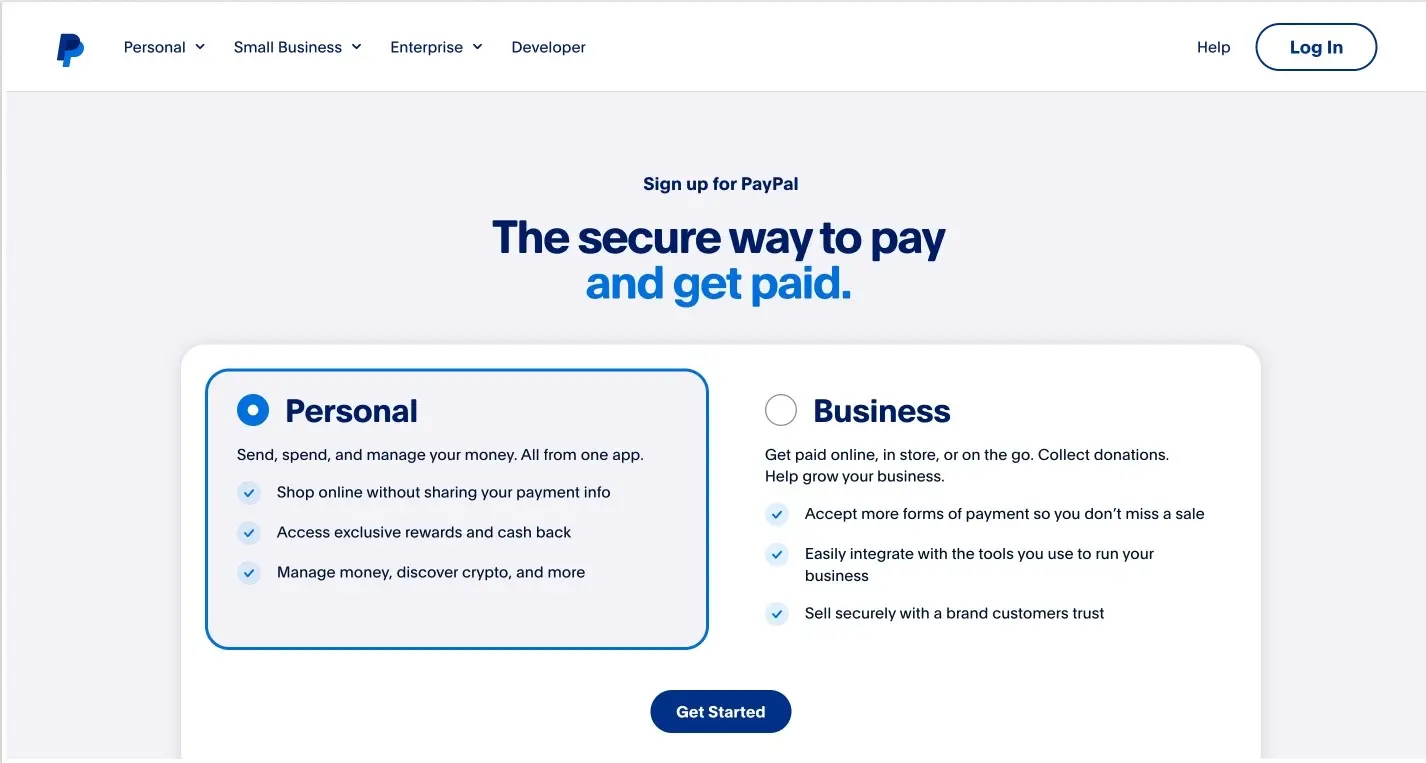
Once registered, you get a digital wallet to send and receive money. You can also link your bank accounts for easy transfers to and from PayPal.
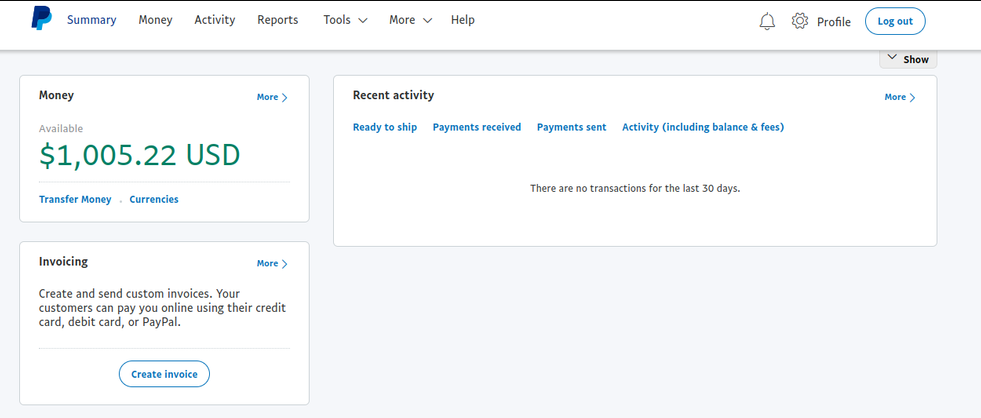
Additionally, PayPal offers services like sending invoices, obtaining business loans, and tax calculation.
Pros
Cons
What Is Stripe and How Does It Work?
Stripe is a financial services and Software as a service (SaaS) company specializing in merchant services.
It provides a top-notch point-of-sale (POS) system and eCommerce plugins that help businesses manage their payment operations efficiently.
Stripe is used by over 3 million active websites and is valued at $94.4 billion. It operates in 46 countries, with limited access in five of them.
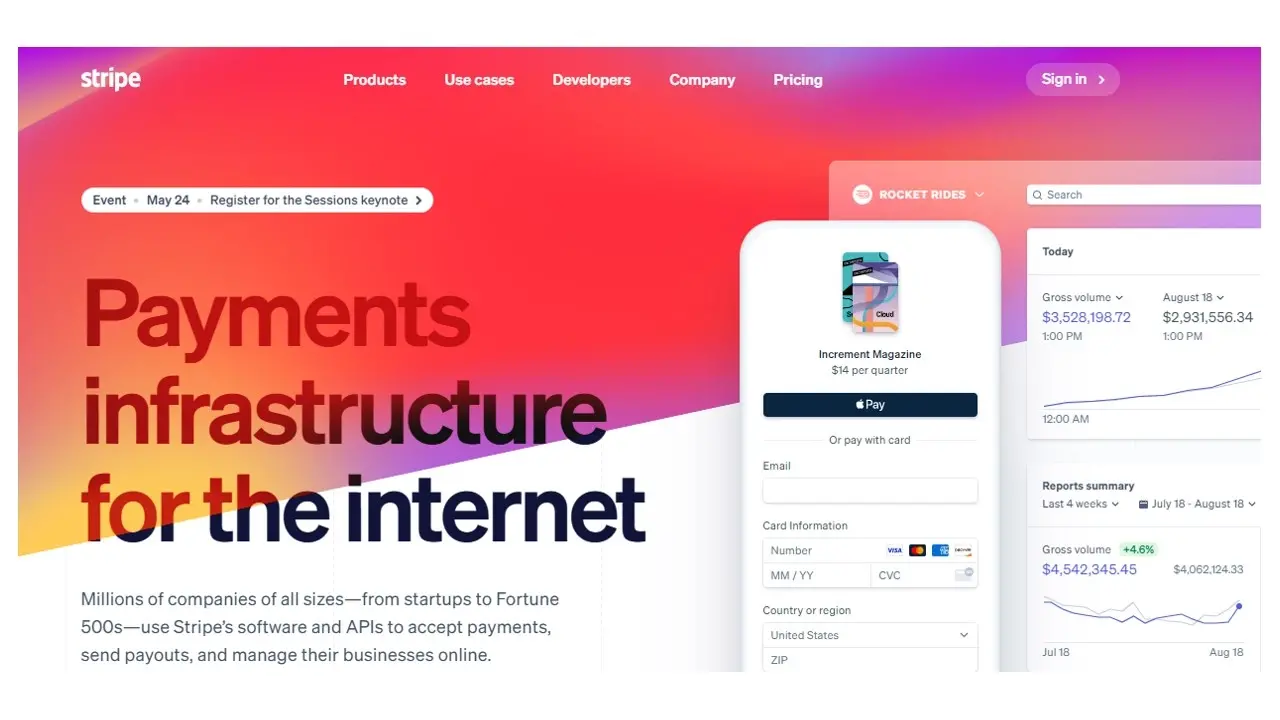
To use Stripe, start by signing up on their website and selecting either a standard or customized eCommerce package.
The platform offers tools and plugins for processing payments, which they facilitate for a fee.
Once a payment is accepted, it's deposited into a provided merchant account and transferred to your business checking account the next day.
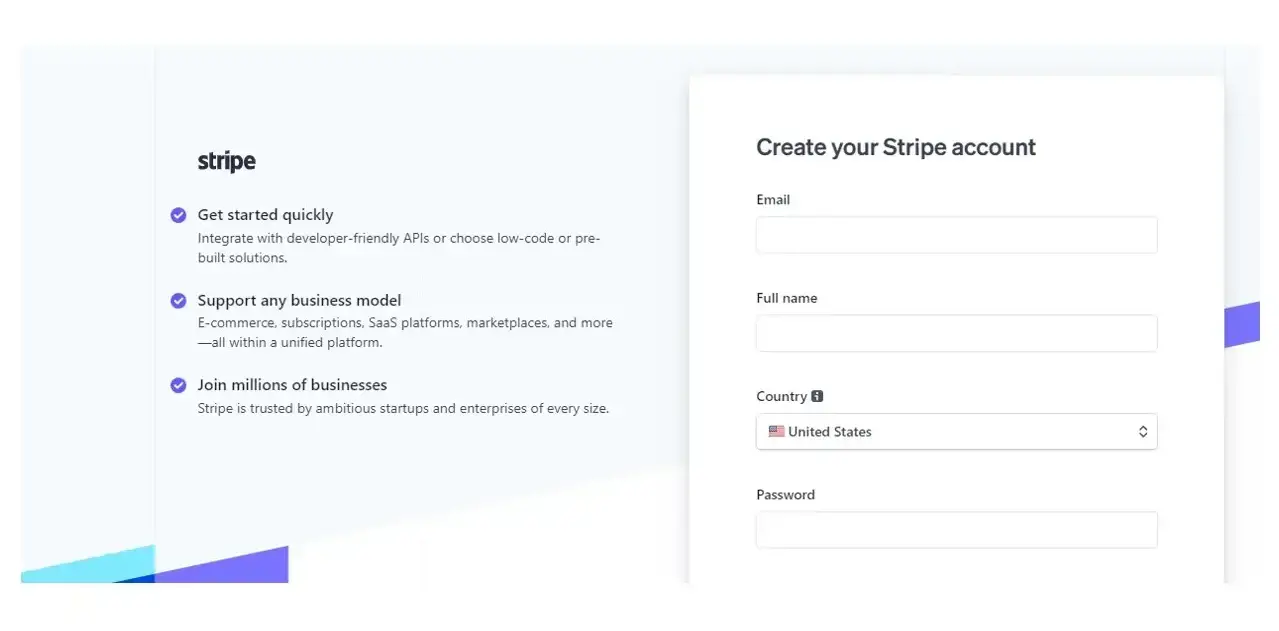
Aside from payment processing, Stripe offers additional services like billing, invoicing, and identity protection.
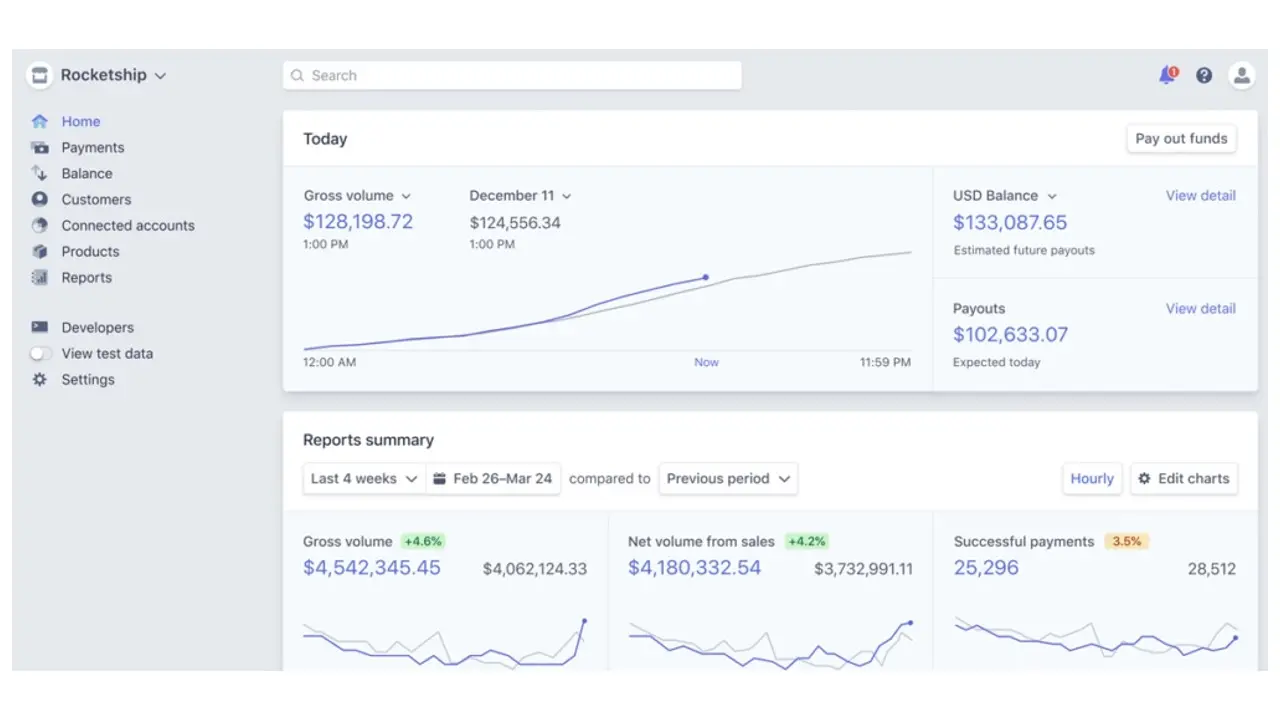
Stripe does not accept PayPal, but you can offer both as separate payment options in your online store.
Pros
Cons
Do I Need to Choose Between the Two and Why?
For large businesses with IT support or those tech-savvy with time to spare, using both Stripe and PayPal separately on your site is feasible.
However, smaller businesses might find it simpler to choose one to avoid complications.
Using both Stripe and PayPal can complicate integrations and development, and may cause you to miss out on their individual volume-based discounts.
The choice to offer Stripe, PayPal, or both on your site ultimately depends on your industry, product types, target countries, and customer preferences.
Offering both may be beneficial if you sell internationally, as Stripe and PayPal each serve different countries.
Stripe Vs. PayPal: What do They Share
Both gateways are payment processing platforms that offer similar services for merchants.
It's easy to start accepting payments, no contract is required by both, and you can stop using their services whenever you want.
Also, both offer additional services, are extremely secure, and protect your identity when you shop online.
Stripe Vs. PayPal: Point by Point Comparison
| Aspect | PayPal | Stripe |
|---|---|---|
| Transaction Costs & Fees | Base fee: 2.59% + $0.49; International fee: 4.4%. No monthly fee for standard, $30 for Pro | Base fee: 2.9% + $0.30; International fee: 3.9%. No monthly fee for standard, from $2 for custom |
| Payment Methods Accepted | Visa, MasterCard, JCB, AmericanExpress, PayPal Credit. | All major credit and debit cards, many e-wallets including Google Pay, Apple Pay |
| Website & CMS Integrations | Easy integration with multiple CMSs and plugins like WordPress. | Supports more CMSs, easy integration using Stripe's API or plugins |
| Refund & Chargeback Policies | Chargeback fee up to $20; fee returned if merchant wins dispute | Chargeback fee $15; proactive fraud detection with Stripe Radar |
| Supported Currencies & Region | Available in over 200 countries, supports 25 currencies | Available in 47 countries, supports over 135 currencies; Stripe Atlas works for global access |
| Payment Option | "Pay in 4" installment option (US only) | Buy now, pay later options available internationally |
| Checkout Experience & Usability | Complex checkout with redirection and multiple steps | Simple, on-site checkout process with fewer steps |
| Ease of Use & Security | User-friendly, PCI Compliant | Requires some technical skills for setup, PCI Compliant |
| Online Invoicing | Free online invoicing regardless of bill amount | Free up to $1 million billed, charges thereafter |
1. Transaction Costs & monthly (regular) fees
Both Stripe and PayPal allow you to start selling with no monthly charges, meaning that if you don't sell anything, you don't pay anything. But let's break the fee structures down, starting with PayPal.
The base fee for PayPal in the US is 2.59% plus $0.49 for online credit and debit payments with no chargeback protection. For international sales, the transaction fees for PayPal are 4.4%, with variations depending on the currency used. PayPal has no monthly fee for its standard version, while the monthly fee for its PayPal Payments Pro version is $30.
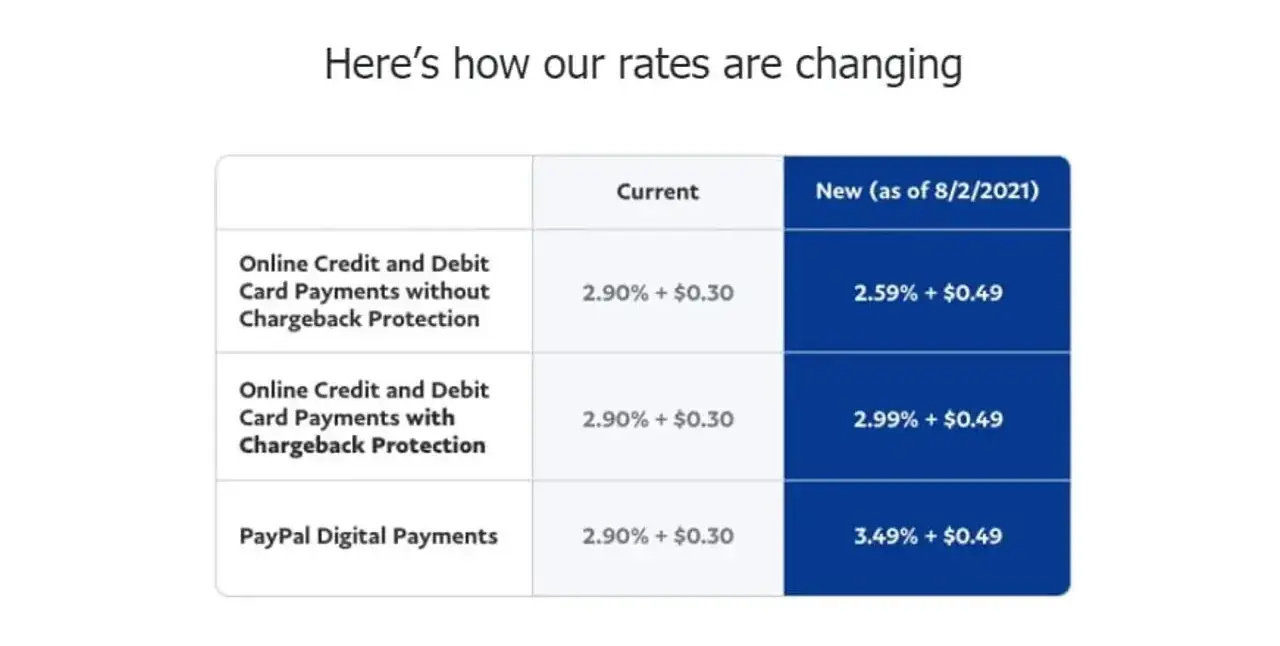
The base fee for Stripe in the US is 2.9% plus $0.30. So, if you make a $100 sale, you pay $3.20 to Stipe. The fee is 3.9% for international sales, with variations depending on the currency used. The Standard version of Stripe does not have any monthly fees, while a custom version starts at $2 monthly per account.
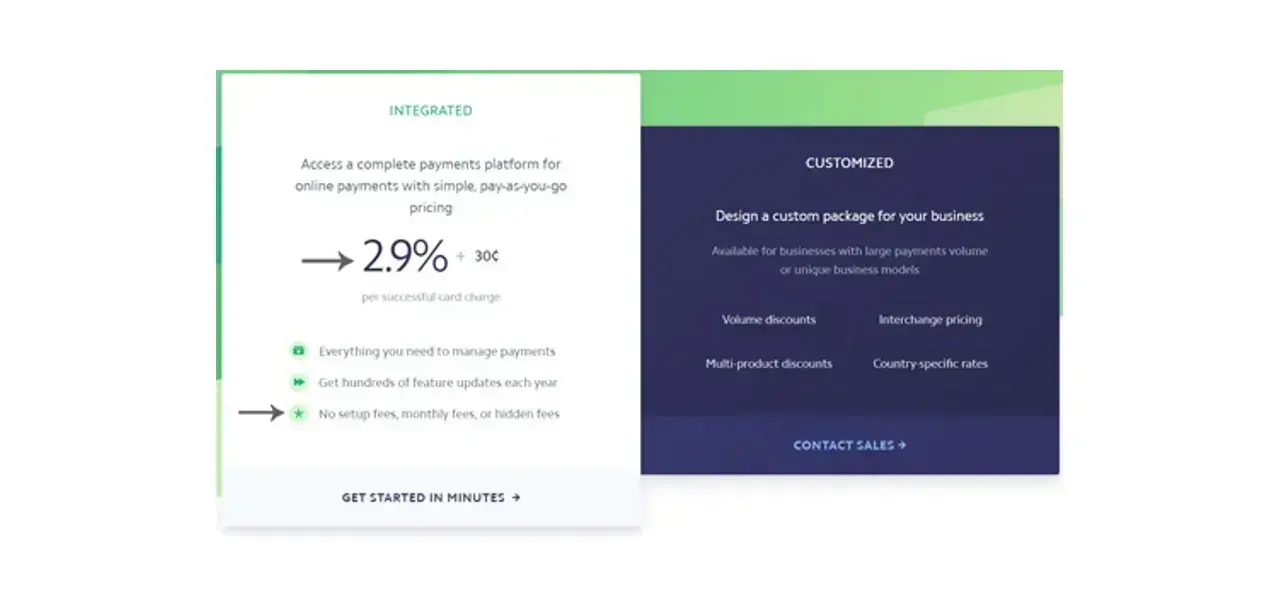
So, the winner of this category is Stripe because it offers lower base, monthly, and international fees.
2. Payment methods accepted
PayPal supports Visa, Mastercard, JCB, AmericanExpress, and other major credit cards but lacks support for many others. It also has PayPal Credit, which is a virtual line of credit that Synchrony Bank offers to PayPal users in the US.

On the other hand, Stripe supports all major debit and credit cards and others that are not so popular. It also supports a wide range of e-wallets like Google Pay, Apple Pay, Alipay, Amex Express Checkout, Microsoft Pay, WeChat, Mastercard's Masterpass, etc.
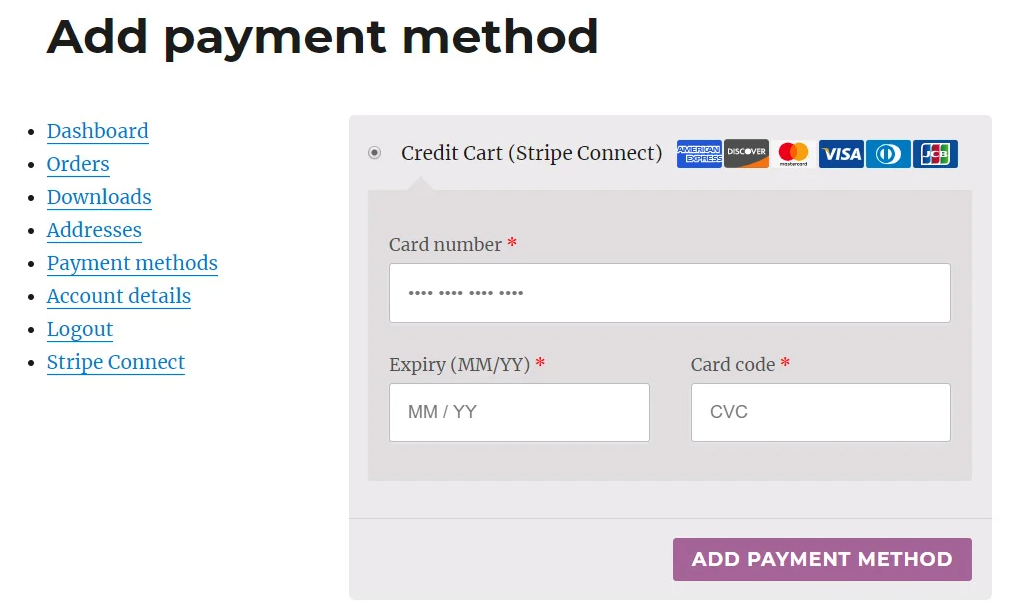
I believe that this category is a tie because while Stripe supports more payment options and is better for international transactions, PayPal and its PayPal Credit is an excellent option for US-based customers and businesses.
3. Website and CMS Integrations
It's quite easy to integrate PayPal with your website. All you need to do is copy and paste some lines of code to your site, and you'll be able to pay with your PayPal account. You can also add other PayPal buttons to your website, like Buy Now, Subscribe, Add to Cart, etc.
PayPal supports and can be integrated with multiple CMSs like QuickBooks, SalesVu, WooCommerce, BigCommerce, etc. There is also a WordPress plugin available for PayPal called WordPress PayPal, which allows you to set up PayPal on your WordPress site.
Stripe supports a couple more CMSs than PayPal, like Drupal, PrestaShop, Magento, Shopware, WooCommerce, WordPress, etc. It is also easy to integrate Stripe on your website by using Stripe's API or their plugin for the CMS you want, like the Stripe Payments plugin that WordPress offers for integration with Stripe.
I'm going to declare a tie for this one since it's easy to integrate your website with both platforms, and there are plugins for most CMSs.
4. Refund, chargeback & dispute policies
A chargeback occurs when a customer contacts their bank and reports a transaction on their card that they disagree with or believe is fraudulent.
With PayPal, when a customer initiates a dispute, the amount goes to the customer, and PayPal takes up to $20 from the merchant's account as chargeback fees, alongside the disputed amount. However, if PayPal ruled in favor of the merchant, the fee is refunded to the merchant later on.
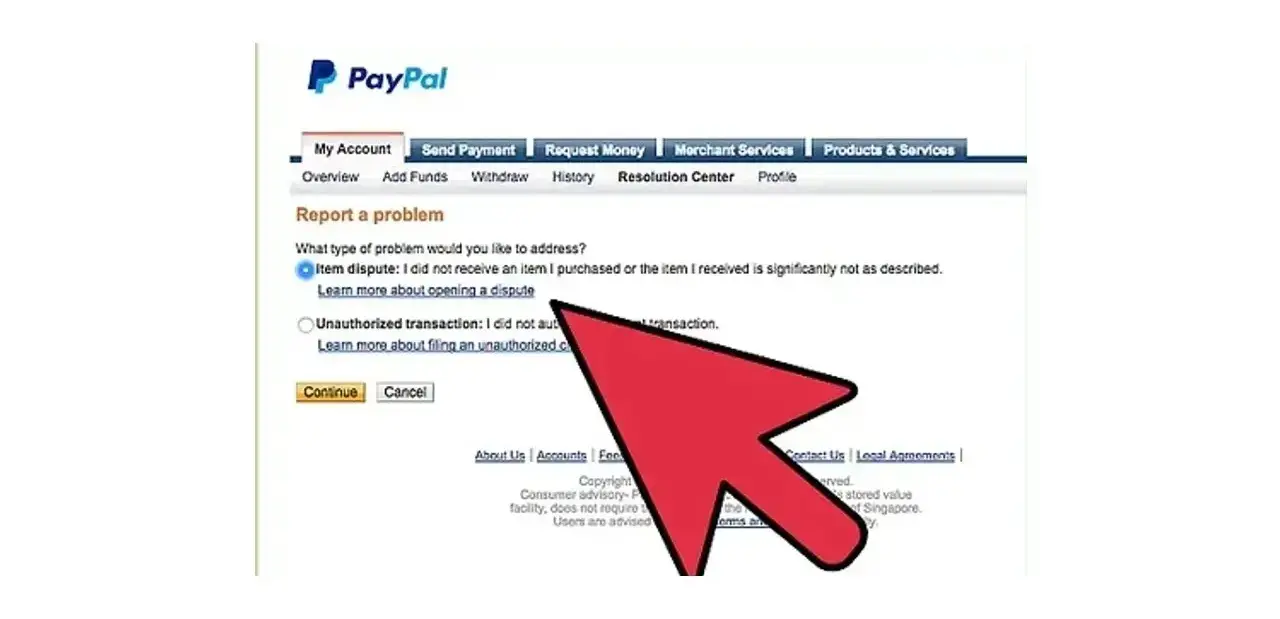
In the event of a dispute, Stripe levies a chargeback fee of $15 along with the disputed amount on the merchant for US users. However, Stripe's amazing and brand-new Stripe Radar functions enable merchants to avoid charge card fraud.
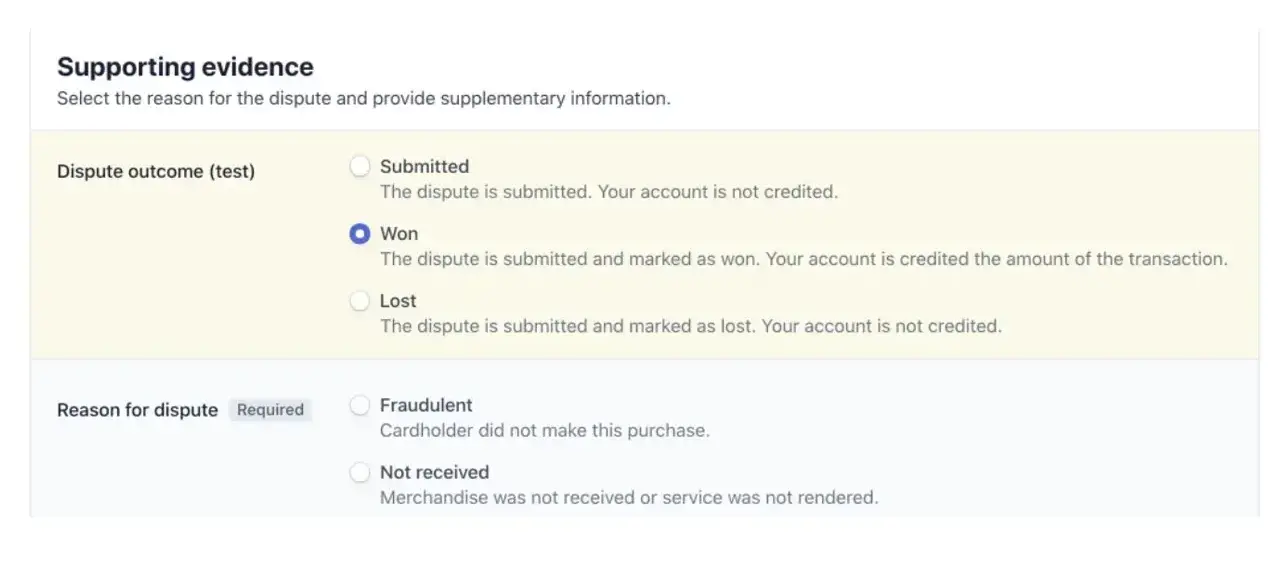
Where refunds are concerned, you won't get your processing fees returned from Stripe or PayPal if your customer gets a refund.
So, in this category, Stripe has the slight upper hand and is the winner because it charges smaller chargeback fees.
5. Supported currencies, regional availability
PayPal is currently available in over 200 countries and regions and supports around 25 currencies. PayPal makes it simple to set up an account and begin receiving payments right away, regardless of where your business is registered.
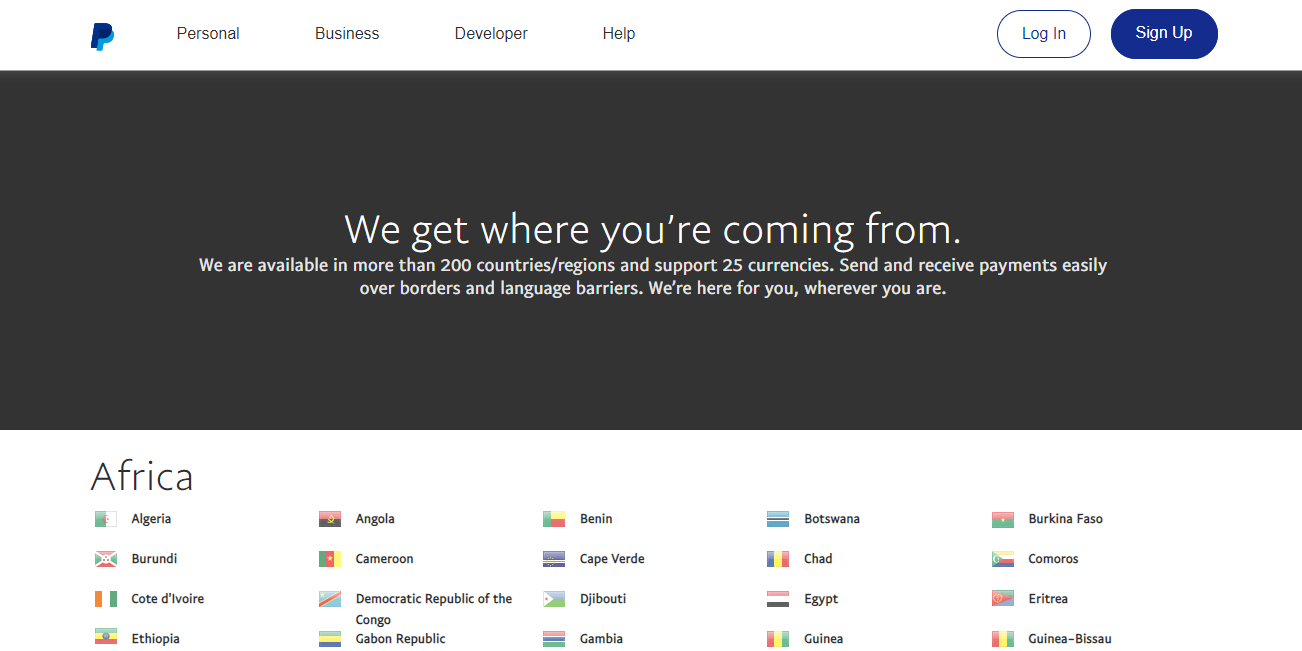
Stripe is the opposite of PayPal in this regard. It's available only in 47 countries but supports over 135 currencies. However, there is a way around this. You can use Stripe Atlas to effortlessly incorporate a US company, open a US bank account, and begin receiving Stripe payments no matter where you are located.
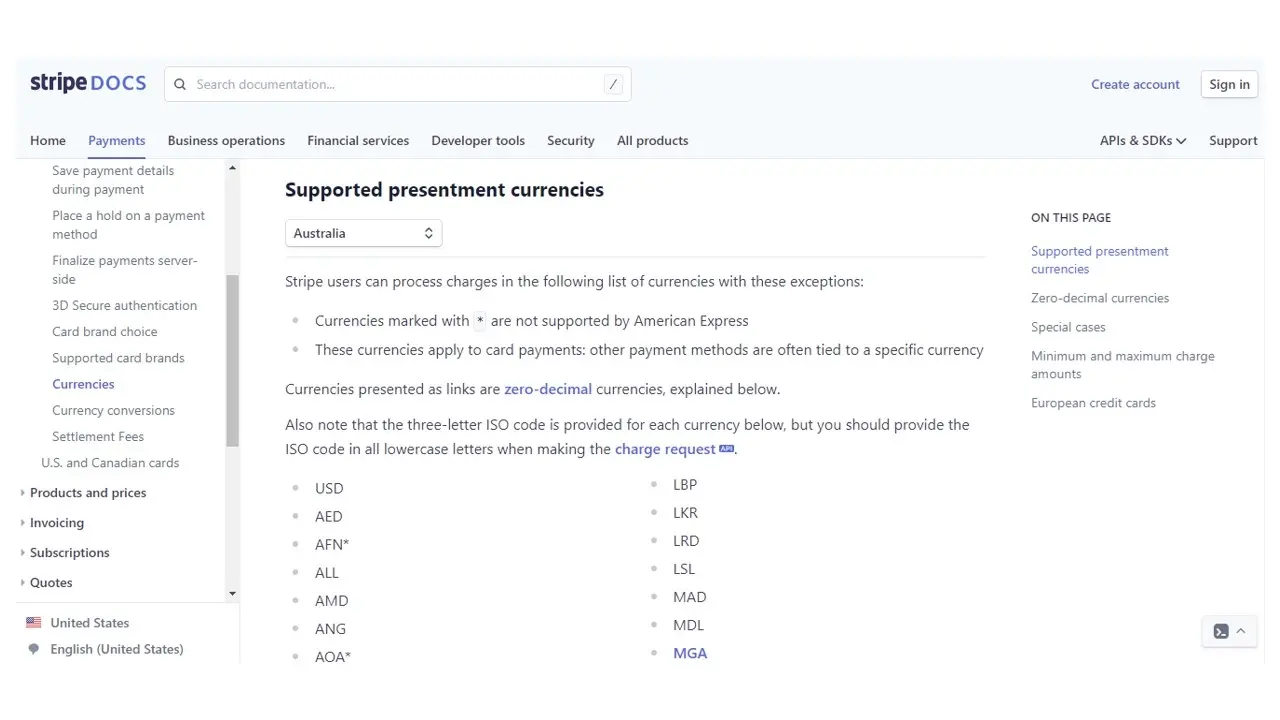
So, the winner here is PayPal because it is available in significantly more countries compared to Stripe.
6. Payment options
PayPal allows its users to buy something now and pay for it later. Merchants can enable customers to pay for a product or service in four separate installments. All you have to do as a customer is choose PayPal at the checkout, select Pay later, and then select Pay in 4. Each installment is due every two weeks, and no interest is charged. However, this is available for US users only.
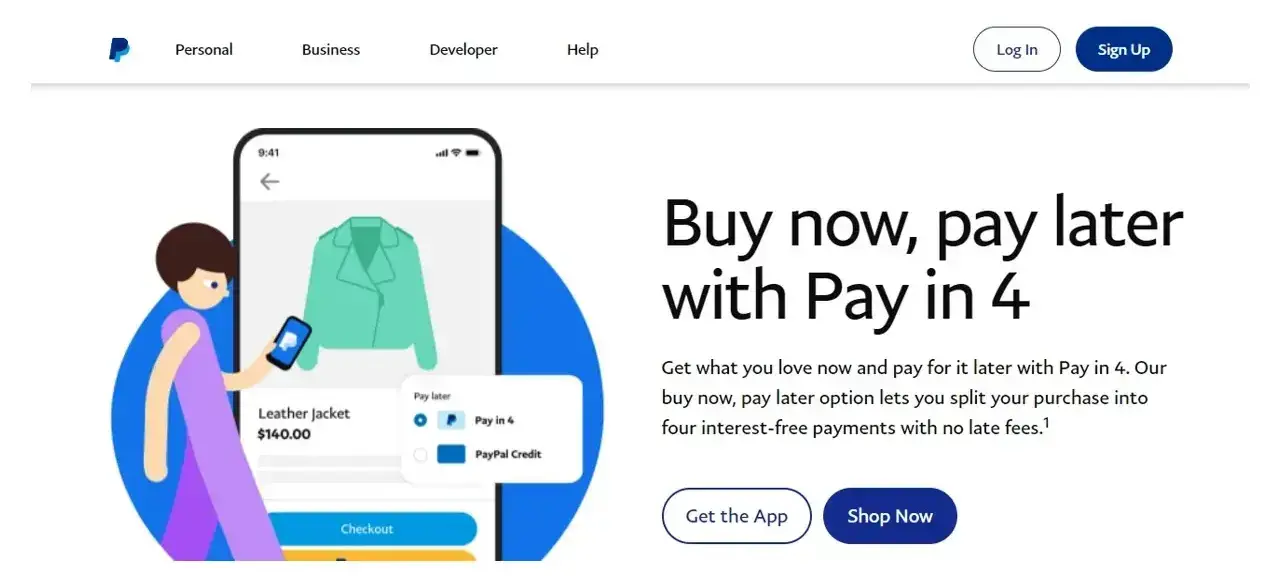
Stripe also has a buy now pay later option, which is only available to customers and not businesses. The customer can pay with a buy now pay later option at checkout. The customer then creates or logs into a buy now, pay later account with the provider that is supported by Stripe, like Klarna. The customer then returns to the company's website after accepting or declining the repayment plan's terms.
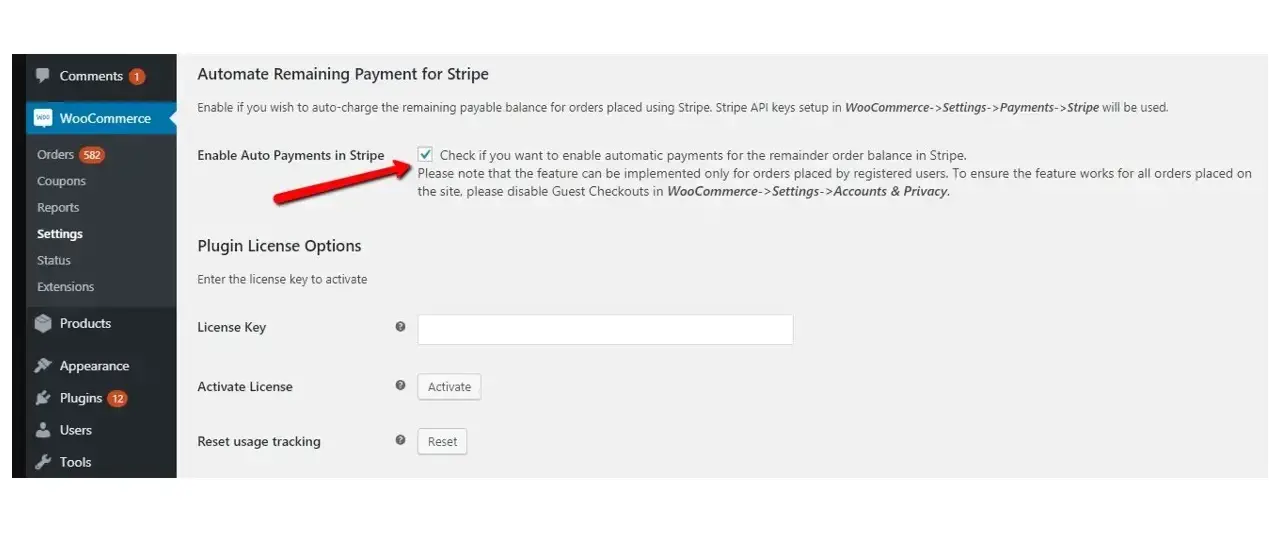
For this category, the winner is Stripe, as it offers a buy now pay later to its international customers, whereas PayPal only offers it to US customers.
7. User's checkout experience and usability
PayPal has a bit of a complicated checkout process. You're redirected to the checkout section after putting your product in the cart. However, with PayPal, the checkout is not done on-site. Rather customers have to click on the PayPal option, which sometimes takes a lot of time to load. Then, they have to log in or skip this step if they're logged in permanently. After this, customers go through the payment methods and select the one they want. Once they've done this, another screen pops up with an Agree and Continue option. After all of this is done, the customer is redirected to the site they're buying from, where there are more steps to be taken, depending on the site. So, PayPal adds several extra steps, resulting in many customers giving up on the purchase because it takes too much time to complete.

With Stripe, the checkout is as simple as it gets. The customer inputs their credit card information, clicks submit and is directed to a thank you or follow-up page. You have control over the design and flow of your site's checkout page.
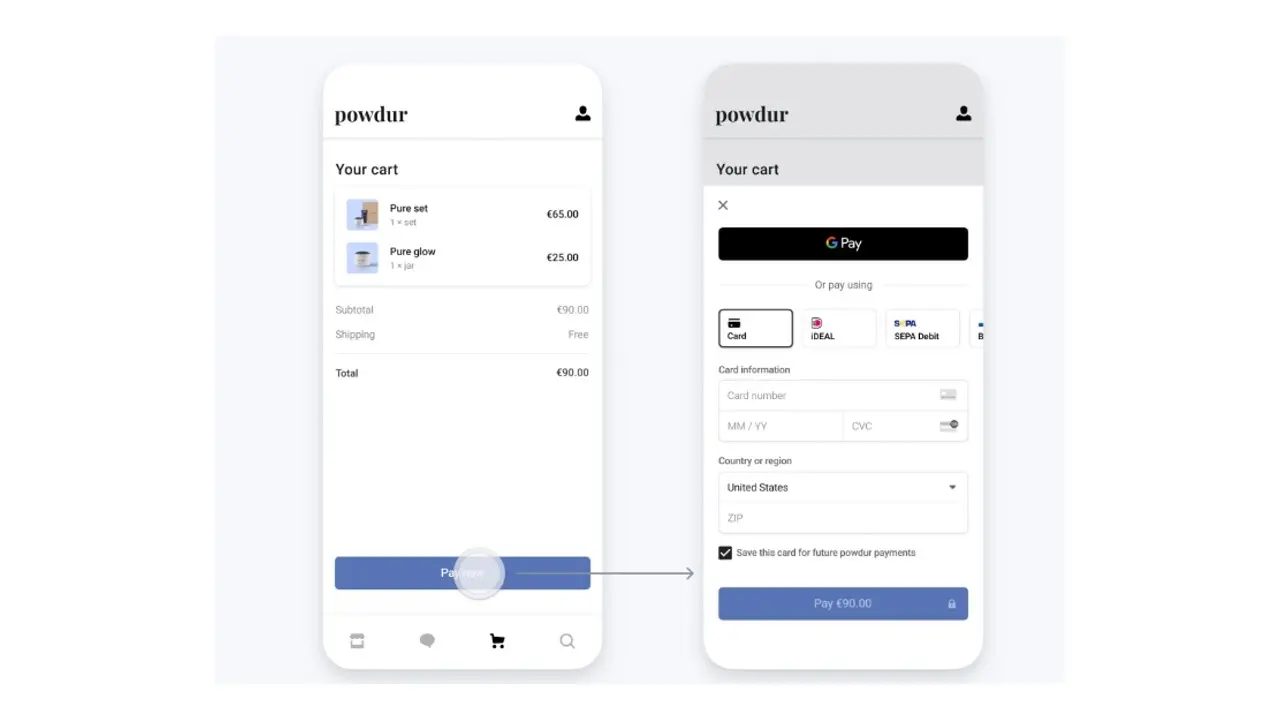
So, the winner here is Stripe, as it has a seamless and easy checkout process.
8. Customer support
PayPal offers support through live chat and emails. It also has a knowledge base and an online forum where you can ask questions. However, it does not provide phone support and does not have a blog.
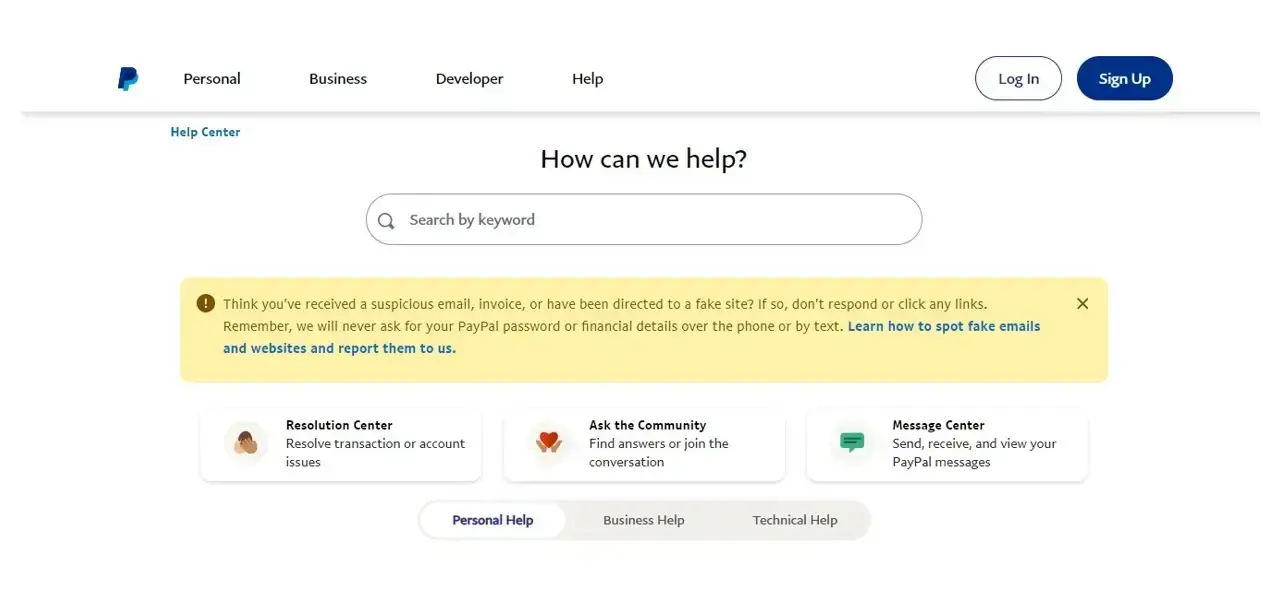
Stripe offers more customer support options, including live chat, phone support, and email. It also has a knowledge base, a blog, and a forum. For more technical assistance, you can use the IRC channel to get instant help from Stripe experts. Stripe also has a Discord server where you can ask questions.
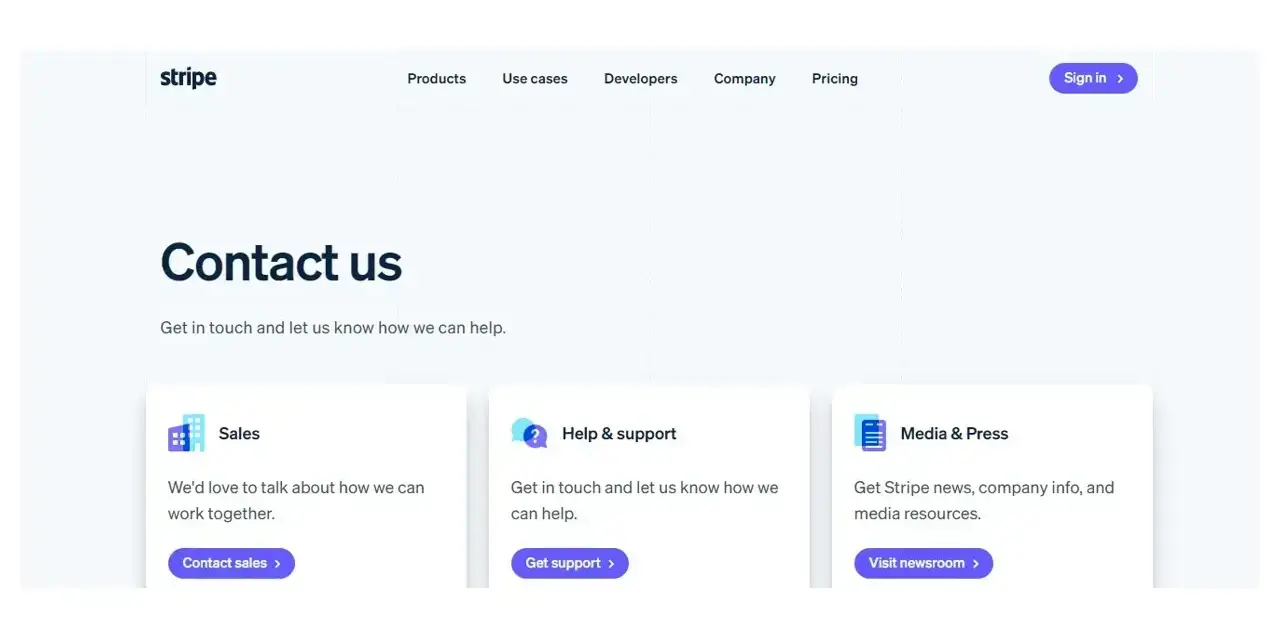
I have to declare Stripe the winner of this category because it offers superior customer support and more channels for communication compared to PayPal.
9. Ease of use and security
Both PayPal and Stripe have made it their mission to be accessible to as many people as possible and therefore are simple and easy to use. However, setting up an account with Stripe can require more technical skills to make certain features available.
Security-wise, however, both companies score high, as both are PCI Complaint and meet the rigorous standards of the Payment Card Industry. So, you can rest assured that your data is safe with both platforms.
Overall, I have to give the crown to PayPal, as it is easier to set up than Stripe.
10. Online invoicing
Both PayPal and Stripe offer customizable invoicing to their customers.
However, the difference is that with PayPal, this feature is completely free regardless of the amount of your bill.
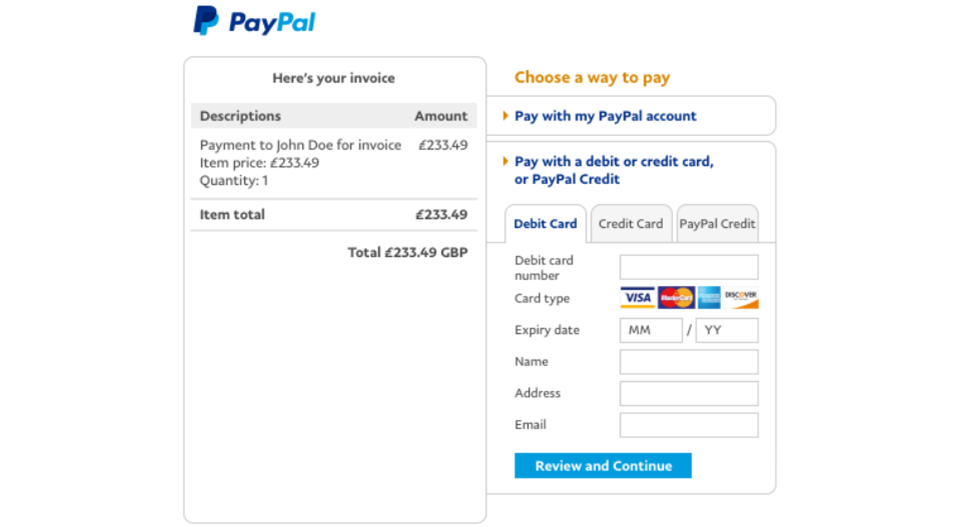
With Stripe, on the other hand, the online invoicing feature is free up until your bill is $1 million. After surpassing that amount, you must pay to create invoicing through Stripe.
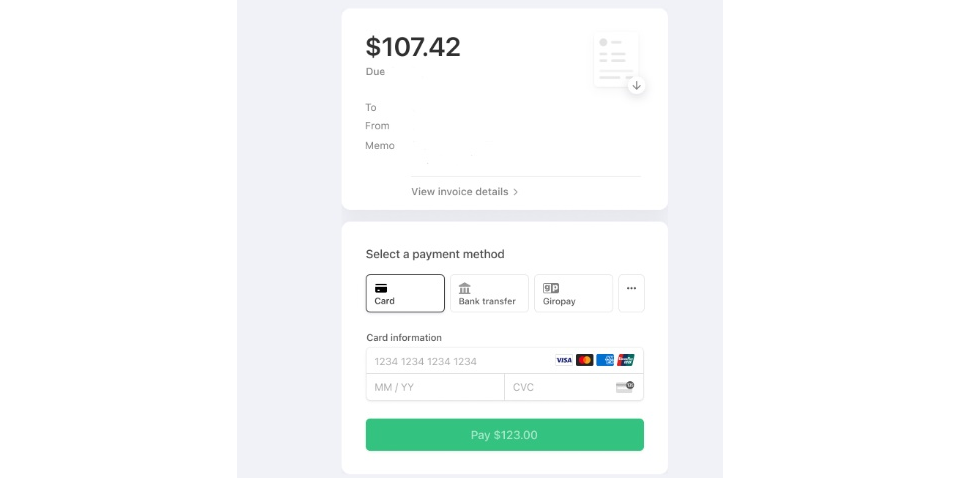
So, the winner here is PayPal because it offers online invoicing for free regardless of the amount of your bill.
How PayPal and Stripe Facilitate Mobile Commerce
PayPal and Stripe both play pivotal roles in enhancing mobile commerce by offering streamlined, secure, and versatile payment solutions.
Here’s how each platform facilitates transactions on mobile devices:
Optimized Mobile Payments
Both PayPal and Stripe offer mobile-optimized payment solutions that ensure a seamless checkout experience on smartphones and tablets, reducing friction and abandonment rates.
In-app Payments
Stripe provides robust APIs that allow developers to integrate payment processing directly into mobile apps, whereas PayPal offers mobile SDKs for iOS and Android, simplifying in-app purchases.
One-Touch and Quick Pay Option
PayPal's One Touch™ allows users to checkout without entering user credentials every time, speeding up the payment process.
Stripe also supports similar functionalities through Apple Pay and Google Pay integration.
Responsive Customer Interface
Both platforms ensure that their payment interfaces are responsive and adapt well to different screen sizes and device types, maintaining usability and aesthetics.
Enhanced Security Features
Both gateways employ advanced security measures such as tokenization to protect sensitive payment information, crucial for maintaining trust in mobile transactions.
Support for Multiple Currencies and Payment Methods
This allows businesses to cater to a global audience by accepting a variety of payment methods and currencies through mobile interfaces.
Detailed Documentation and Developer Support
Comprehensive guides and developer tools from both PayPal and Stripe make it easier for businesses to integrate and manage mobile payment solutions.
Best Practices for Integrating Multiple Payment Gateways
Let’s quickly review some best practices for integrating multiple payment gateways to your ecommerce platform.
1. Evaluate Business Needs: Determine what your business and customers need from a payment gateway. Consider transaction fees, market reach, and supported currencies.
2. Simplify User Interface: Keep the checkout process clear and simple. Use icons and labels for easy recognition of payment methods.
3. Uphold Security Standards: Ensure all payment gateways are PCI DSS compliant to secure customer data across platforms.
4. Optimize for Mobile: Ensure payment gateways provide a smooth mobile transaction experience.
5. Regular Updates and Testing: Keep payment integrations updated and perform regular tests to ensure compatibility and functionality.
6. Clear Support and Documentation: Provide easy-to-follow guides and customer support details for all payment methods.
7. Monitor Transaction Rates: Track the success rates of transactions through each gateway to spot and address performance issues.
8. Ensure Legal Compliance: Check that all payment gateways meet legal regulations in your operating countries, like GDPR in Europe or CCPA in California.
Final Remarks
Suffice it to say that there isn't a clear-cut winner between Stripe and PayPal as they both cater to different types of businesses.
If you're starting out and need an easy-to-use payment gateway with minimal setup, PayPal is the better choice.
Conversely, if what you need is a customizable gateway with advanced tools, Stripe is ideal.
That said, you can always opt to use both if you have enough human resources and technical expertise to support this endeavor.
Frequently Asked Questions
How much does WooCommerce hosting cost?
Prices are very reasonable and start from just $2.99 per month at Verpex.
Do I need web developer skills to use Shopify or WooCommerce?
No. Both platforms welcome beginners, but you might get more out of WooCommerce’s extensions if you’ve got some previous experience.
Does my ecommerce store need to be PCI compliant?
Yes, if you’re going to be accepting payments via credit and debit card you’ll need to meet PCI regulations.
Can I use hosting for WordPress for an ecommerce site?
Yes, of course. In fact, the platform has some of the best online stores and a range of payment processor plugins on the market.
Do PayPal and Stripe support subscriptions?
Yes. Both PayPal and Stripe support subscription services. PayPal enables recurring payments, while Stripe offers tools for automated billing and custom payment plans. Both are ideal for businesses with recurring payment needs.

I've been navigating the web hosting waters for years now. As the Chief Editor at Verpex, I team up with some awesome writers to dish out the good stuff on hosting. Got a Master's in Journalism, so I always have an eye out for quality. Whether you're just dipping your toes or you're a seasoned surfer, I'm here to make everything web hosting feel like a breeze
View all posts by Julia Lozanov





















